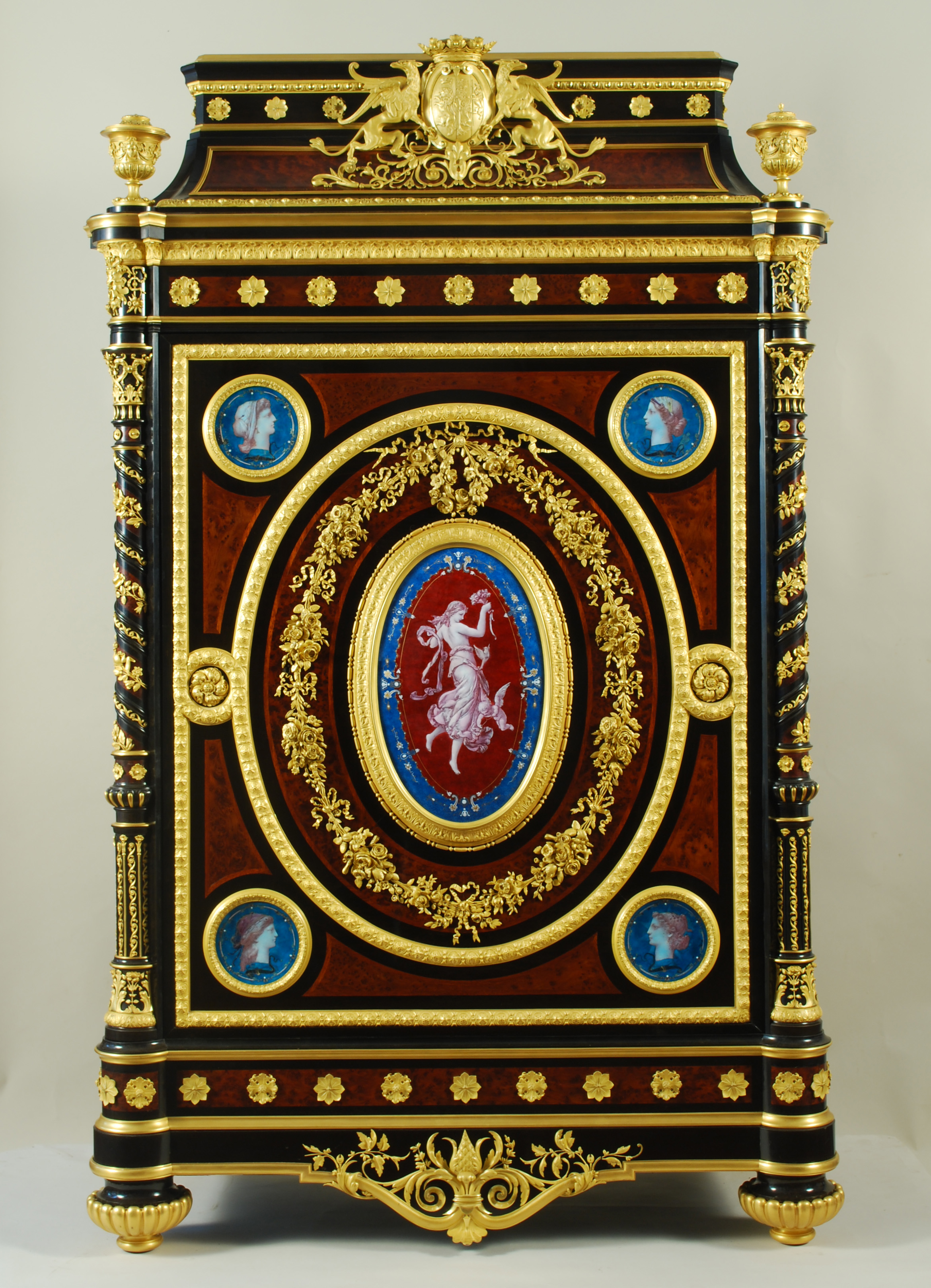
Click here to view image
Ignoto ebanista (Napoli, sec XVII?)

Click here to view image
Ignoto ebanista (Napoli, sec XVII?)

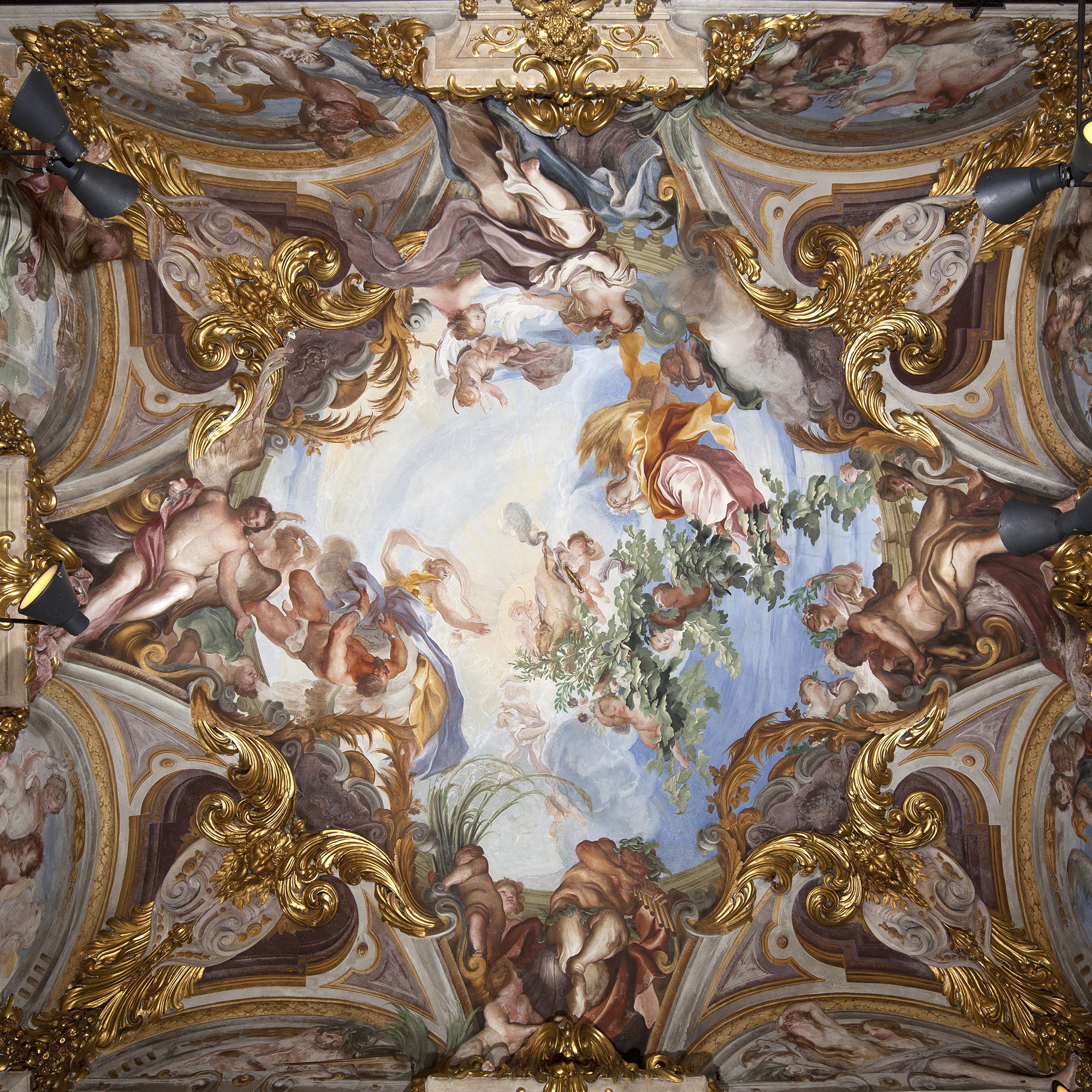
Click here to view image
Vault of the Hall of Spring and vault of the Hall of Summer
Gregorio, De Ferrari
affresco
From 1686 to 1687 Gregorio De Ferrari was engaged, with his father-in-law Domenico Piola, in the fresco decoration of the second noble floor of Palazzo Rosso, for the commission of Gio. Francesco I Brignole - Sale (1643 - 1694): starting from the hall, passing through the four rooms to the east until you get to the south loggia facing the sea, a unified and coherent iconographic project has as its central theme the symbolic identity between Apollo the god of the Sun, who with his chariot marks the rhythm of the days, and the client Brignole - Sale, whose heraldic coat of arms, a rampant Lion, coincides significantly with the zodiacal sign of summer, the season of the sun. The decoration of the salon, created by Gregorio De Ferrari and fulcrum of this complex figurative system, revolved around the mythical figure of Phaeton, son of Apollo, and brought to the corners the coats of arms of the clients, the Brignole and his wife Maria Durrës. Unfortunately, this decoration was destroyed after the bombing of the Second World War. Following the salons dedicated to the allegories of the Four Seasons, iconographically connected to the general symbolic plan as emblems of the passage of time. In the first two rooms, still in the hands of De Ferrari, Spring and Summer triumph at the center of two times framed by stuccoes by Giacomo Maria Muttone. In the Summer Room, Ceres, goddess of the harvest, in flight beside a putto holding a great golden bundle of ears, prevails over the winter winds driven out by the Aura, while the center of the composition is still dominated by the figure of Apollo-Sun accompanied by a lion, this time alluding also - as already in the salon - to the sign of the zodiac and therefore precisely to the summer, in a pleasant game of references between astrology and dynastic celebration. Fresco allegory of spring and summer.

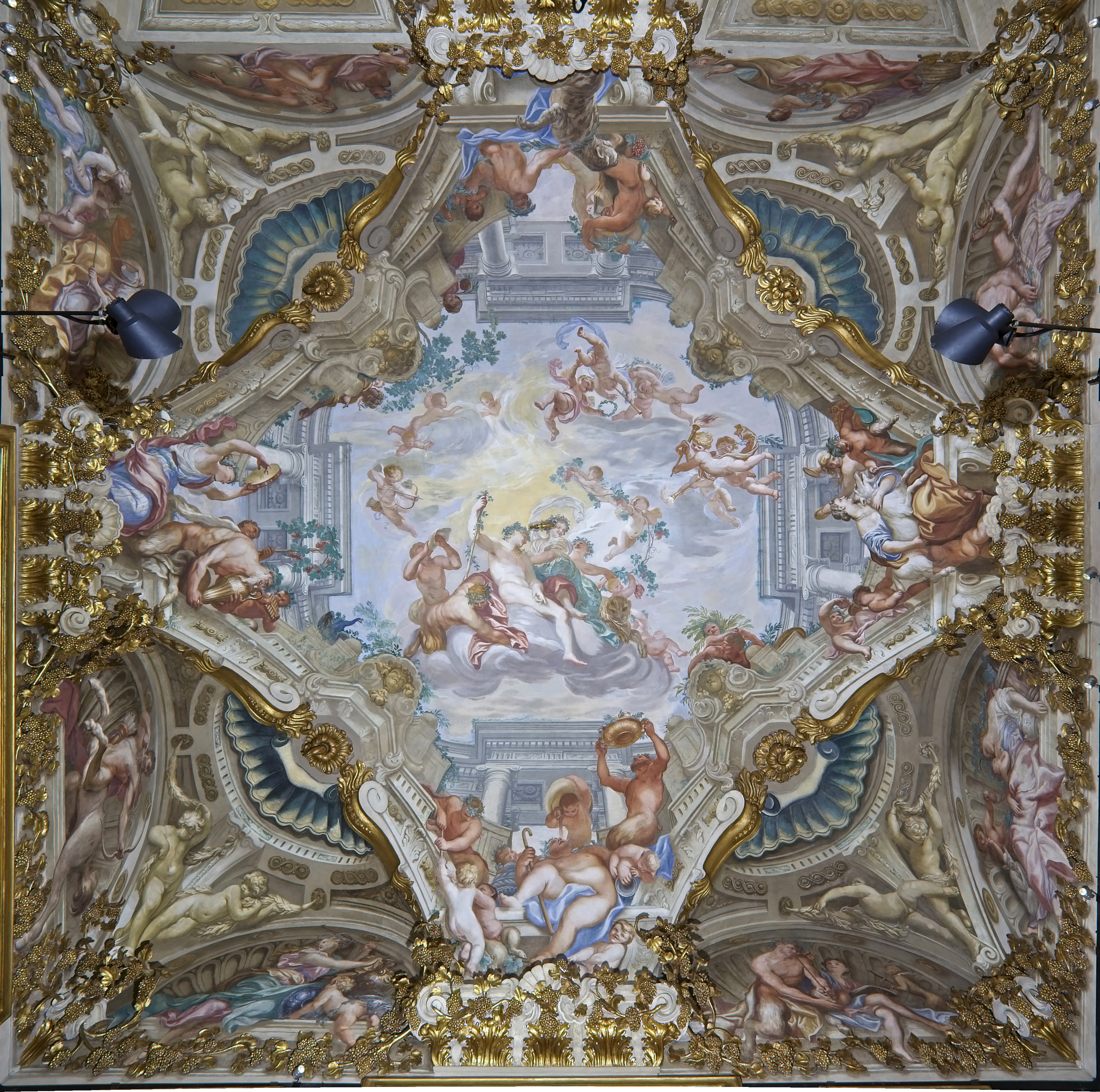
Click here to view image
Domenico Piola (Genova, 1627-1703)
Domenico Piola painted the vaults of the last two east rooms of the second noble floor of Palazzo Rosso between 1687 and 1688, as evidenced by the balances of payments
concerning him. It was the period after his return from the flight-trip undertaken in 1684, following the French bombardment of the city, which took him to various places in northern Italy and especially to Parma, where he had the opportunity to compare and update on the correct solutions his way of conceiving the painted space in relation to the architectural. This experience, and, together, the contact with Gregorio De Ferrari, his son-in-law and pupil, gave his language a looser lightness, especially in the practice of a lighter and less full-bodied use of color, which combines the taste for open space and for the composition intended rotating.
These elements can be seen in the design of the rooms with the allegories of Autumn and Winter, where Domenico made use of the collaboration of stucco plastererGiacomo Muttone and the Bolognese quadraturist Stefano Monchi.
The theme of Autumn is resolved with the traditional representation of the triumph of Bacchus. The vault depicts, immersed in a clear diffused light, the god, however, not intent, in wild festivities, but young, beardless, seized in a moment of calm tenderness when, upon arriving in the island of Nasso, met Ariadne, abandoned there by Theseus, He fell in love with her and wanted her to be his bride. The result is a painting in which drawing as a structuring element of the image gives way to the color that, through light light light light traps, shapes the bodies and spatial planes.
The Bacchic tiaso, animated and lively, is relegated to the margins of the composition: Sileno ebbro, baccanti, centauri, satiri and the animals dear to Dioniso - goats, panthers, monkeys - master lunettes and peducci with more vivid and plastic chromatic registers, in pleasant, dialoguing contrast with the vault.
The beautiful golden stucco frieze that runs along the four sides of the room, in a continuous succession of vine shoots, as well as reiterating the theme of the season, gives the inspiration for the decorative motif of the frame of the large mirror placed between the windows.

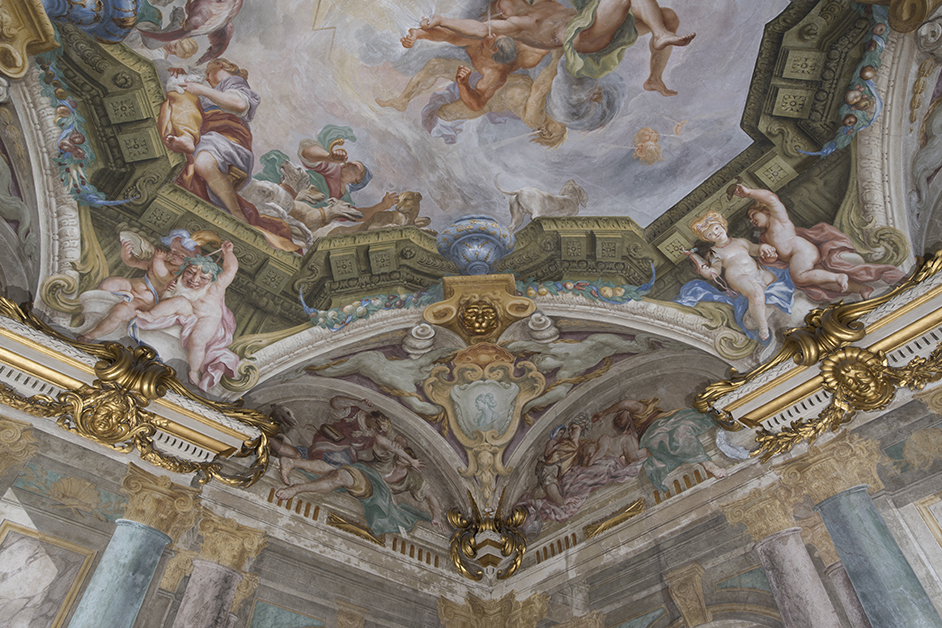
Click here to view image
Domenico Piola (Genova, 1627-1703)
Domenico Piola painted the vaults of the last two east rooms of the second noble floor of Palazzo Rosso between 1687 and 1688, as evidenced by the balances of payments
concerning him. It is the period after his return from the flight-trip undertaken in 1684, following the French bombardment of the city, which took him to various places in northern Italy and especially to Parma, where he had the opportunity to compare and update on the correct solutions his way of conceiving the painted space in relation to the architectural. This experience, and, together, the contact with Gregorio De Ferrari, his son-in-law and pupil, gave his language a looser lightness, especially in the practice of a lighter and less full-bodied use of color, which combines the taste for open space and for the composition in a rotating sense.
These elements can be seen in the design of the rooms with the allegories of Autumn and Winter, where Domenico made use of the collaboration of the plasterer Giacomo Muttone and the Bolognese quadraturist Stefano Monchi.
In the Winter Room, Piola implements absolute freedom in the layout of the space. The plastic intertwining of the bodies of the winter winds, contrasts Winter, exceptionally young and dressed in light, which warms at the brazier, with behind March or Favonio, while allusions to carnival and hunting, enriched with animals and exotic characters, move the edges of the vault, barely contained by a mighty painted balustrade. Scenes of banquets, musicians, idleness, playful fights, or games of children, make the reading of this fresco, from the point of view of both thematic and perception of the painted space, an effect accentuated by the architectural perspectives trompe-l'oeil made by Nicolò Codazzi on the walls.

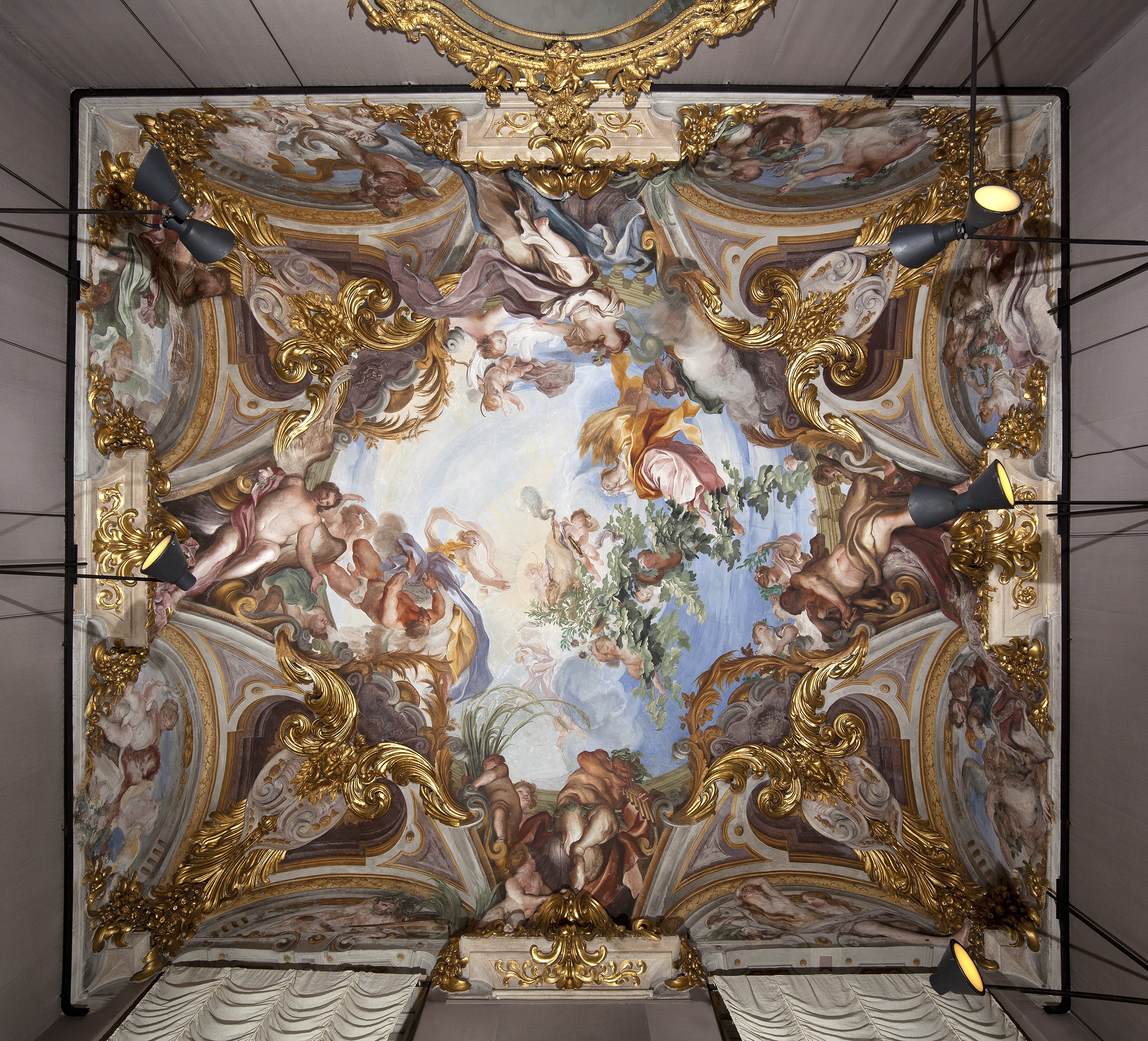
Click here to view image
Gregorio De Ferrari (Genova, 1647-1726)
In the summer hall, Ceres, goddess of the messengers, in flight beside a putto holding with her a great golden bundle of ears, prevails over the winter winds driven away by the nymph of the breezes, Aura, while the center of the composition is still dominated by the figure of Apollo-Sun accompanied by a lion, this time alluding also - as already in the salon - to the sign of the zodiac and therefore precisely to the summer, in a pleasant game of references between astrology and dynastic celebration.

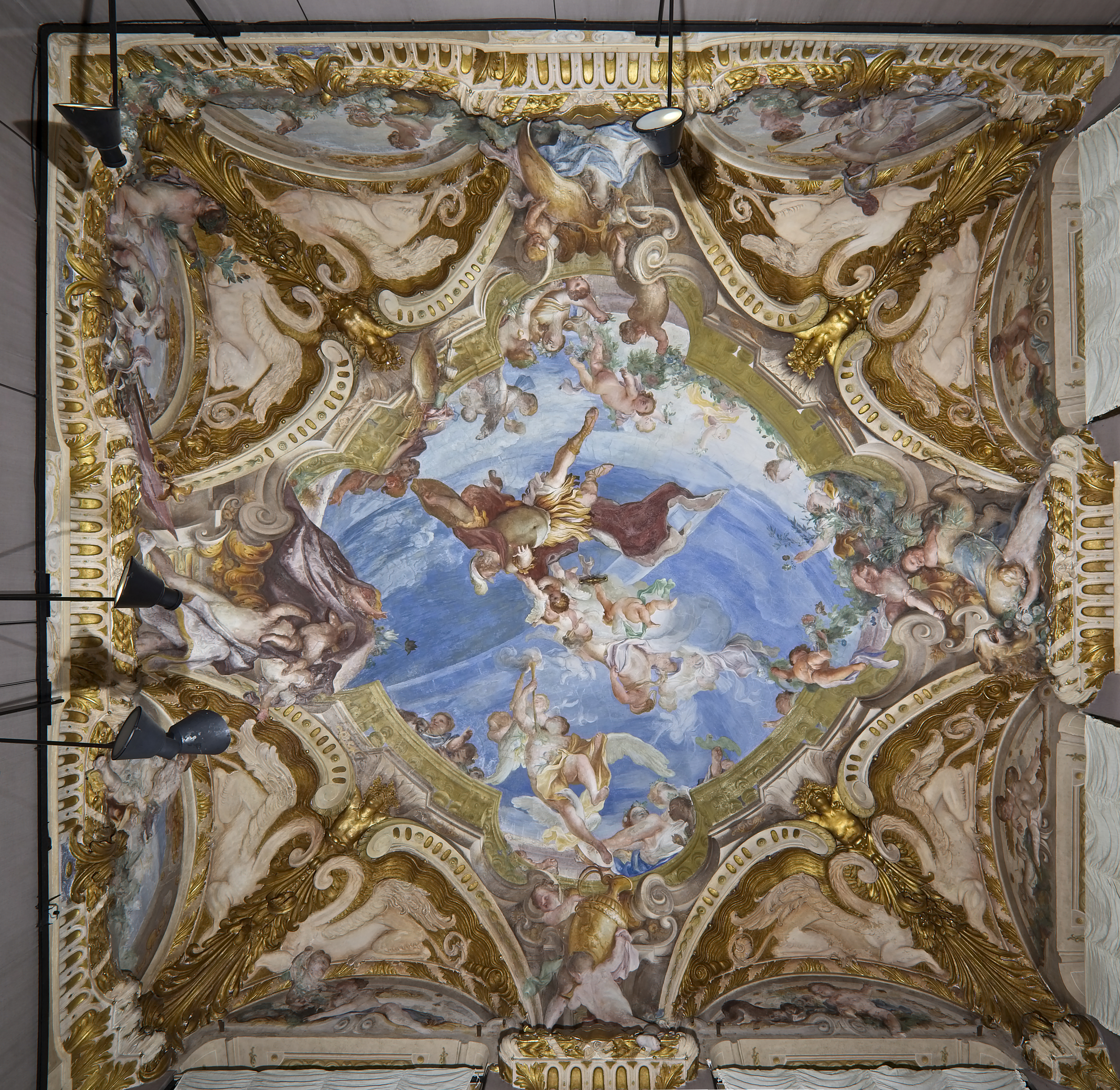
Click here to view image
Gregorio De Ferrari (Genova, 1647-1726)
From 1686 to 1687 Gregorio De Ferrari was engaged, with his father-in-law Domenico Piola, in the fresco decoration of the second noble floor of Palazzo Rosso, for the commission of Gio. Francesco I Brignole - Sale (1643-1694): starting from the hall, passing through the four rooms to the east until you get to the south loggia facing the sea, is developed a unified and coherent iconographic project , which has as its central theme the symbolic identity between Apollo god of the Sun, who with his chariot marks the rhythm of the days, and the client Brignole - Sale, whose heraldic coat of arms, a rampant Lion, coincides significantly with the zodiac sign of summer, the season of the sun.
The Hall of Spring is one of the wonderful four rooms to the east of Palazzo Rosso, each frescoed with subjects inspired by a season of the year.
Venus, in a charming and seductive attitude, triumphs on Mars in flight while Cupid, the emblem par excellence of the amateur arts, sets fire to the torches on a swan; all around young girls and merry putti play among the flowers, while on the left stands a lion, Another direct reference to the heraldic weapon of the client.

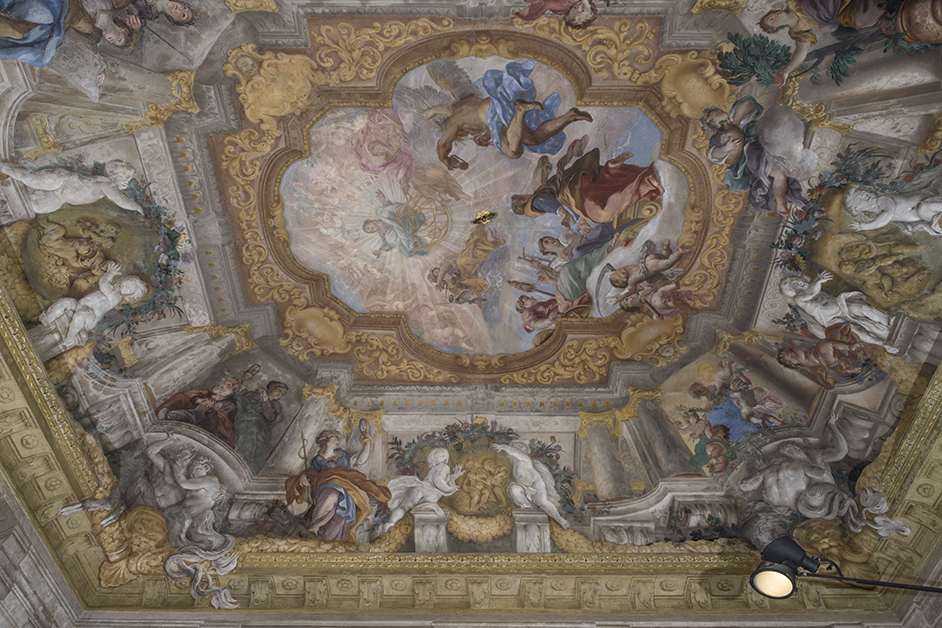
Click here to view image
Giovanni Andrea Carlone (Genova, 1639-1697)

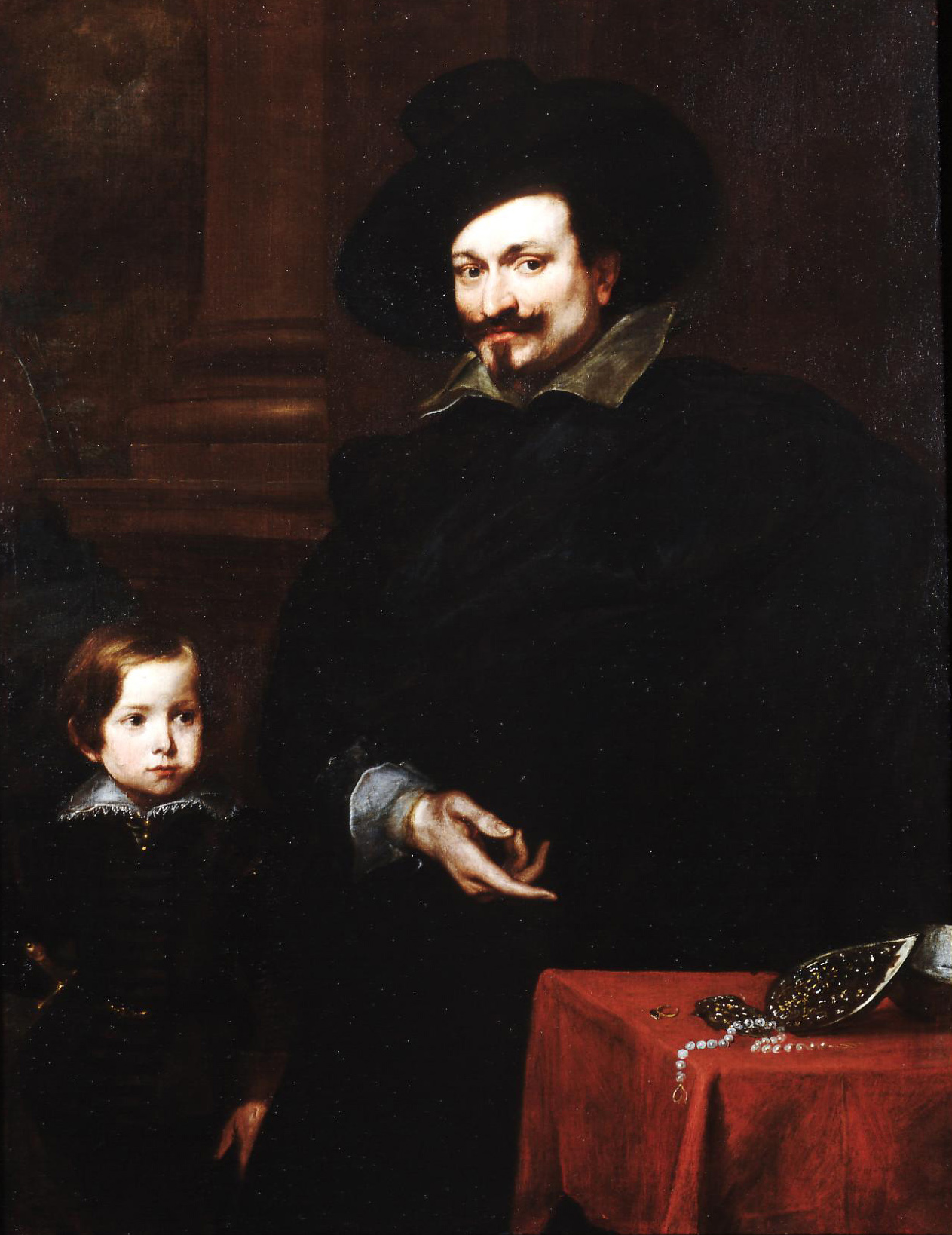
Click here to view image
Portrait of jeweler Giacomo Pucci with his son Alberto
Maria Brignole-Sale De Ferrari 1874 Genova - donazione
Van Dyck, Antoon
PR 50
Unità di misura: cm; Altezza: 125; Larghezza: 100
olio su tela
Cento opere di Van Dyck - Genova - 1955<br>Il tempo di Rubens. Da Anversa a Genova. Opere del seicento fiammingo. - Genova - 1987<br>Van Dyck a Genova. Grande pittura e collezionismo. - Genova - 1997
The painting has been part of the Brignole-Sale picture gallery since before 1684, the year in which the inventory of Gio. Francesco I's possessions was drawn up, in which it is cited as “Portrait of the jeweler Pucci and his son by Antonio Vandick.” Vandyckian autography has been questioned in the past by Barnes (2004), but it is entirely plausible that in the last years of his Genoese sojourn, the period in which the canvas under consideration was made, the artist employed collaborators to carry out the numerous commissions. The subject of the portrait corresponds to that “Giacomo Puchi” who participated in the “callega,” or public auction of the property of Costantino Pinelli, who died in August 1622, buying a number of gold and silver objects that can be linked to his trade as a jeweler. Next to him appears his son, identifiable as Alberto Pucci, who was born on July 9, 1623 and baptized in the basilica of Nostra Signora delle Vigne, the goldsmiths' quarter. (Santamaria in Genoa 2018, p. 204) Portrait of Giacomo Pucci seated, on his right his son Alberto.

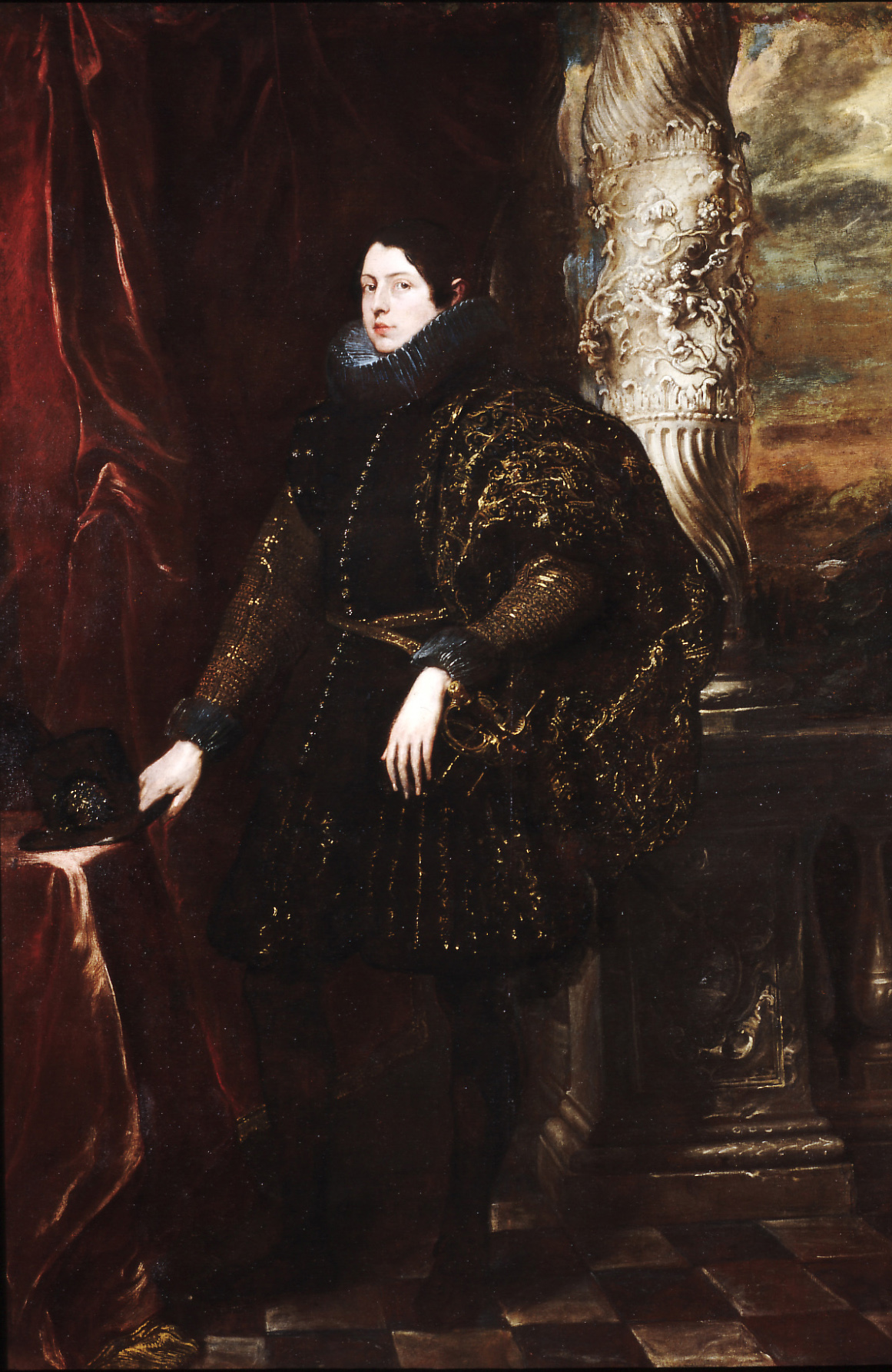
Click here to view image
Portrait of a gentleman of the Spinola family
Maria Brignole-Sale De Ferrari 1874 Genova - donazione
Van Dyck, Antoon
PR 115
Unità di misura: cm; Altezza: 241; Larghezza: 148
olio su tela
La bella Italia - Torino - 2011-2012<br>Anversa et Genova: un sommet dans la peinture baroque - Anversa - 2003<br>Van Dyck a Genova - Genova - 1997<br>Cento opere di Van Dyck - Genova - 1955
Although in the past it has been attributed to Rubens (Zeri 1955), the painting is now agreed to be a work from the early years of Antoon van Dyck's Genoese sojourn, thanks in part to the 1997 restoration, which made it possible to highlight the painting technique used. The effigy, dressed in the Spanish fashion of the first decades of the 17th century, certainly belongs to the Spinola family, as evidenced by the coat of arms visible on the balustrade behind the subject. In 2012 Tordella identified the subject with Filippo Spinola, third count of Tassarolo, from a portrait drawing by Ottavio Leoni from around the same years (1623-1624; Tordella 2012 in “History of Art,” 132). In 1728 the painting was purchased by Gio. Francesco II for Palazzo Rosso, where it still stands today. Before that date, the work is known to have been in the collection of Cristoforo Lercari (Boccardo in Antwerp 2003, p. 80). The conformation of the elaborate twisted column behind the effigy is credibly inspired by that painted by Rubens in 1620 in his portrait of Aletheia Talbot, Countess of Arundel; however, the aforementioned restoration also revealed that, in an earlier draft, the artist had conceived of a simpler, cylindrical-shaped column, very similar to the one outlined in the drawing preserved in the Albertina in Vienna, which, as a result, was considered possibly preparatory for the present painting (Boccardo in Antwerp 2003, p. 80). Full-length portrait of a gentleman.

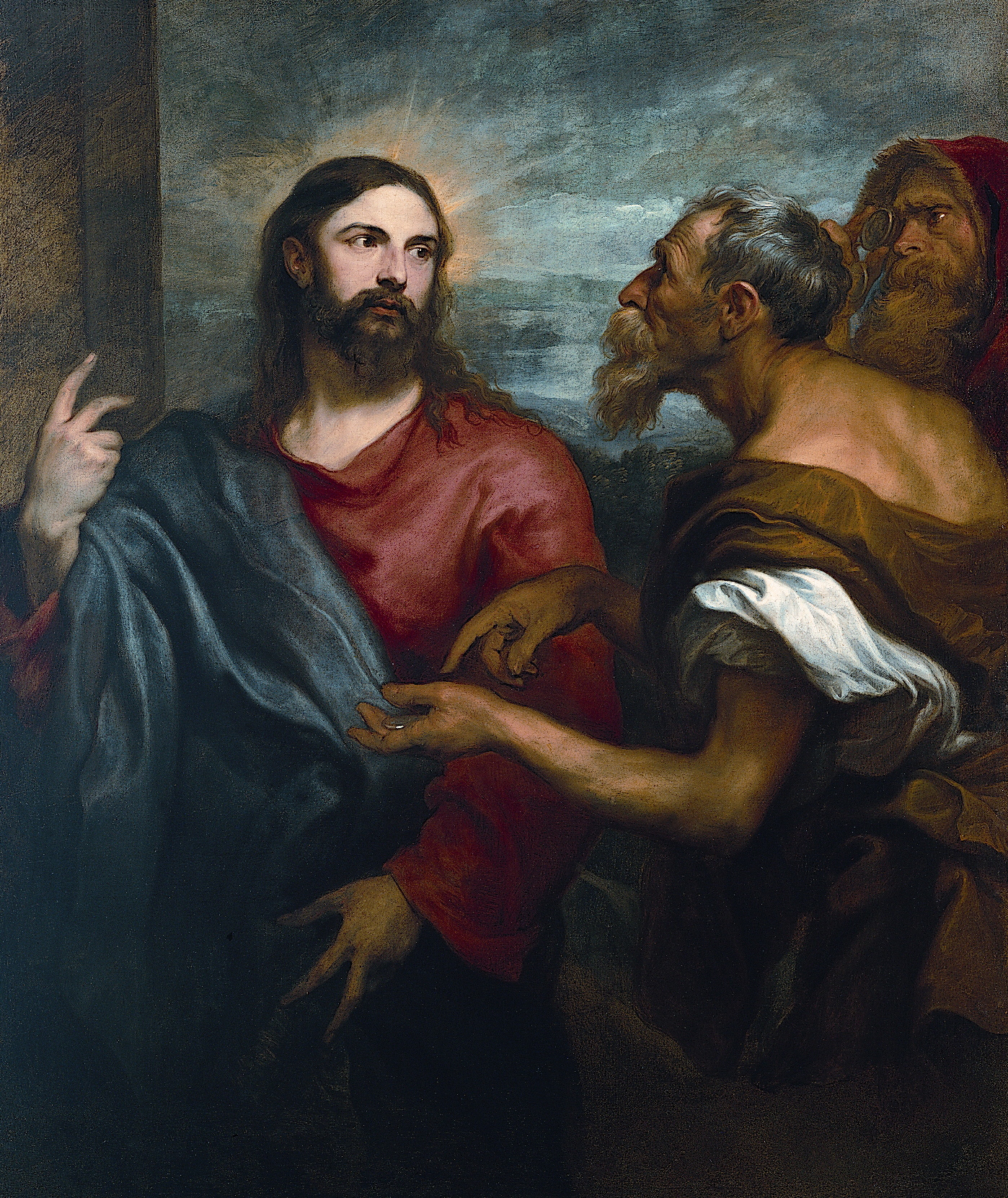
Click here to view image
The Christ of the Coin
Maria Brignole-Sale De Ferrari 1889 Genova - legato
Van Dyck, Antoon
PB 191
Unità di misura: cm; Altezza: 142; Larghezza: 119
olio su tela
Mostra d'arte antica aperta nelle sale del Palazzo Bianco - Genova - 1892<br>Cento opere di Van Dyck - Genova - 1955<br>Anthony Van Dyck - Washington - 1990<br>Van Dyck a Genova. Grande pittura e collezionismo - Genova - 1997
The painting, datable around 1625, appears to be a reinterpretation of a canvas of similar subject painted by Titian for Philip II of Spain, now in the National Gallery in London. The latter must have been known to the artist probably through an engraving by Martino Rota, as is confirmed by the fact that the composition conceived by Van Dyck reproduces the Titian one in counterpart, that is, by reversing it “in mirror form.” The subject of the work is the Gospel episode in which the Pharisees try to persuade Jesus to take a stand on the controversial issue of taxes and recognition of Rome's political authority. When questioned about the permissibility of tribute to Caesar, Jesus asked to be shown a coin and, pointing to the effigy of the emperor imprinted on it, uttered the phrase “give to Caesar what is Caesar's and to God what is God's,” inviting them to make a distinction between what belongs to the emperor and what belongs to God. (Besta 2010, p. 76) The painting depicts Christ conversing with two people.


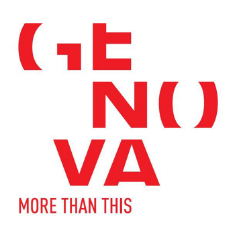
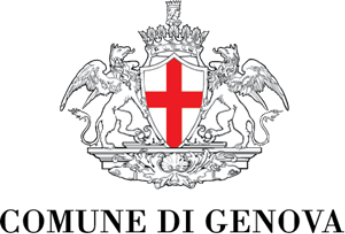
Headquarters:
Municipality of Genoa - Palazzo Tursi
Via Garibaldi 9 - 16124 Genoa
C.F / VAT 00856920102